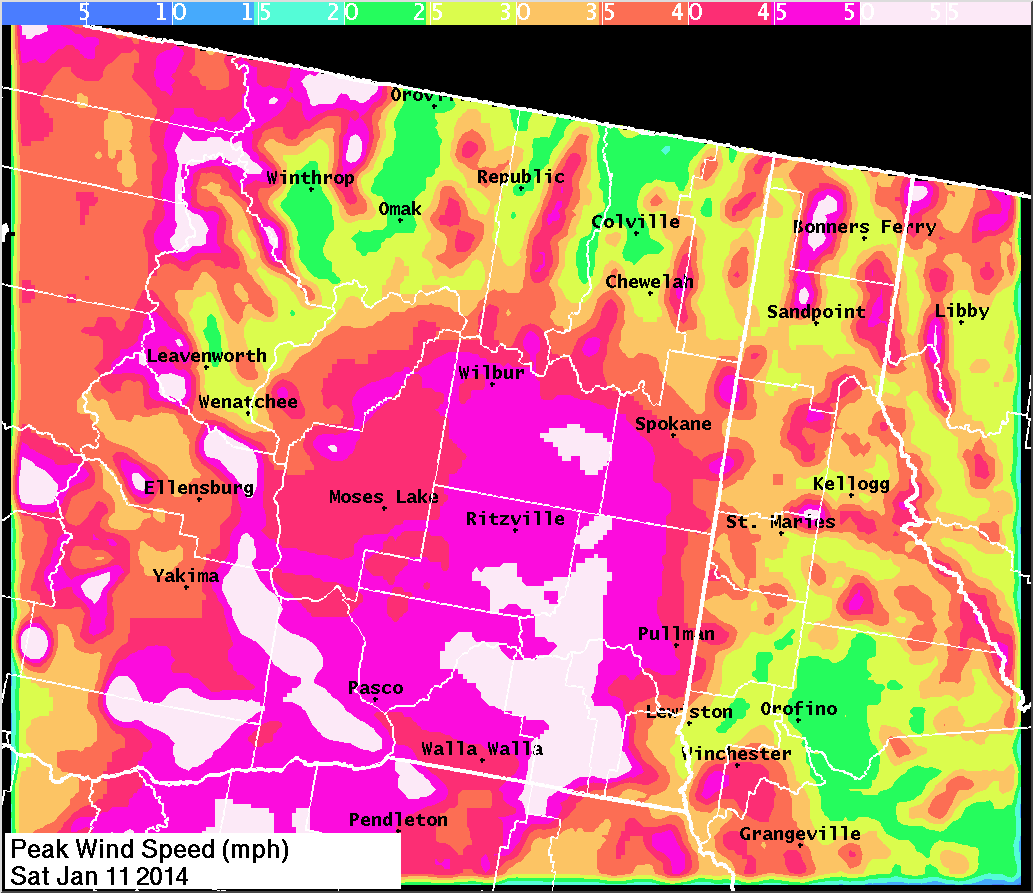You might not have noticed, but it's been exceedingly dry in the Inland Northwest this winter. The lack of snow is obvious, but we haven't been getting much rain either. Below is a map of the precipitation deficit across the West for the October through December period.
 |
| Precipitation departure across the western US from 10/1-12/31 |
The "warm" colors (yellow, orange, red) show areas of below-normal precipitation, which encompasses all of Washington, Oregon, and Idaho. The largest deficits are on the coast because they normally get the most precipitation. The Washington coast is more than 20" below normal! The image below shows the percent of normal precipitation.
.gif) |
| Percent of average precipitation for 10/1-12/31 |
This image shows that California is exceptionally dry, but eastern Washington is very dry as well.
But in the West, we rely the snow pack in the mountains for much of our water supply. So let's take a look at how the mountain snow pack is faring this winter.
 |
| Percent of normal snow water equivalent (SWE) |
The map above depicts the water content in the mountain snow pack as a percent of normal. For example, the mountains of north central Washington contain 68% of the snow water content or snow water equivalent they would normally have on January 2nd. The Washington and Oregon Cascades have very little snow, only 17% to 48% of normal snow water equivalent. The water content is slightly better in the Idaho Panhandle mountains, but still below normal.
We can also look at the precipitation at selected locations. Below is the graph from Lyman Lake, which is in the Cascades, west of Lake Chelan.
 |
| Snow water equivalent for Lyman Lake, WA |
The black line shows the current year, and compares it to normal (green line) as well as the driest (red line) and wettest (blue line) years. As you can see, on the 1st of January, the snow water equivalent (the amount of water in the snow pack) was below the red line, meaning that this is the lowest snow pack on record at that location for the beginning of January. Records for these sensors only go back into the 1980s, so saying this is a "record low snow pack" is pretty misleading.
Here's the data for Lookout Pass in the Idaho Panhandle:
 |
| Snow water equivalent for Lookout Pass, ID |
The snow pack in the Panhandle Mountains is a little better than the Cascades. Not the driest ever, but still well below normal.
So this all begs the question: Why has it been so dry? Below is an image showing our average jet stream for the Oct-Dec period.
 |
| Mean Jet stream position 10/1-12/31 |
The shading shows wind speed. The black line is the jet stream. Storm systems follow the jet stream. So this year, storms from the Pacific are being steered into western Canada, and then they descend into the eastern US. In other words, the storms are missing the Pacific NW.
Here's what the jet stream pattern normally looks like:
 |
| Normal jet stream position for 10/1-12/31 |
In a normal year, the jet stream is pointed directly at the Pacific NW.
So is there any hope that this pattern will change? We don't have forecasts out for the rest of the winter. So instead, let's look back at past winters that started off dry like this year.
The table below shows the 16 driest October-December periods in Spokane. This year is the 3rd driest so far (tied with 1929).
 |
| Driest October-December periods in Spokane |
So how did the remainder of the winter into early Spring fare in those years, and is it possible to make up the precipitation deficit? As you see below. The odds are not good. In fact only one of those years was able to see the precipitation total climb to normal (1969) and even then it just barely made it. In most cases, the total October-March precipitation was 75% or less of the climatological normal after an unusually dry start to the water season (a western US water season begins in October).
 |
| October-March Precipitation for the 16 driest preceding October-December periods |
Do the climatological trends look any different for Wenatchee? The table below shows the driest October-December periods. This years precipitation total since October in Wenatchee is a mere 0.75" or 22% of the normal. This is the second driest beginning to the late fall and early winter season since 1976.
 |
| Driest October-December periods in Wenatchee |
So were any of those dry years able to make up the precipitation deficit during the second half of winter? Nope. 16 out of 16 years ended the season with below normal precipitation and much like Spokane, most saw only 75% or less of the climatological normal.
 |
| October-March Precipitation for the 16 driest preceding October-December periods |
So as you can see from a climatological standpoint, our odds of seeing a normal or above normal amount of precipitation between October and March is quite slim.














_1.jpg)





























.gif)








